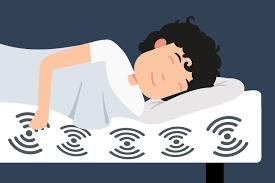You certainly know it: connected devices communicate with each other with radio waves (called radio frequencies), and your smartwatch is obviously no exception to the rule. However, should you be so afraid of these electromagnetic waves that you should limit their potential harmful effects by removing your watch before going to bed? Not really, and we'll explain why.
Its power is very low
Admittedly, it is true, as Anne Perrin explains, that “radiofrequencies are partly absorbed by the body. These waves can cause matter to heat up if the amount of energy absorbed is high enough”. And said heating can, from a certain level of exposure, lead to health effects. But good news: "The amounts of energy emitted by connected watches are low. About the same as Bluetooth headsets. The range is short."
In short, you are not likely to boil tomorrow by consulting your emails. As proof, we want a comparison with another everyday object: "A microwave oven also uses radio frequencies. It emits between 700 and 1000 watts in an enclosed space to heat food, explains the expert. On the other hand , a Wifi box often operates at the same frequency as the oven, but its power is around 100,000 times lower (100 milliwatts maximum). It is impossible to heat water with Wifi!". The balance sheet is therefore clear: "I think there is no reason to worry given the powers at play and the levels of exposure caused by these connected devices."
Strict standards

Beyond these questions of power, also know that all this is obviously very framed. There are therefore regulations* that manufacturers must imperatively apply in order to obtain authorization to market wireless devices. "For the public, we establish thresholds 50 times lower than the level where the first effects due to heating appear, which are not yet burning effects."
Mobile phones, tablets and other connected watches must therefore not exceed SAR limit values (for Specific Absorption Rate): "this guarantees that the quantity of energy absorbed, in watt per kilogram (W/kg), in the human body is not sufficient to cause health effects."
Also, note that "as of July 1, 2020, SAR values must be displayed for any additional wireless device with a power greater than 20 milliwatts that can be used within 20 cm of the body."
In short, you will understand, you can logically continue to wear your watch day and night. But be careful, however: if you wear an electronic medical implant, such as a pacemaker, "it is recommended not to place the connected devices within 15 cm of the implant because of the interference that could occur between the devices."
*In France, the ANFR (National Frequency Agency) is responsible for verifying that these standards are respected
Read also:
Loading-widgetSubscribe to the Top Santé Newsletter to receive the latest news for free










Samsung Galaxy S22, Uncharted et pl...
Tesla: you can now enjoy YouTube in...
EM – Butler vs Purdue Basketball Li...
Nantes. A child victim of an acci...